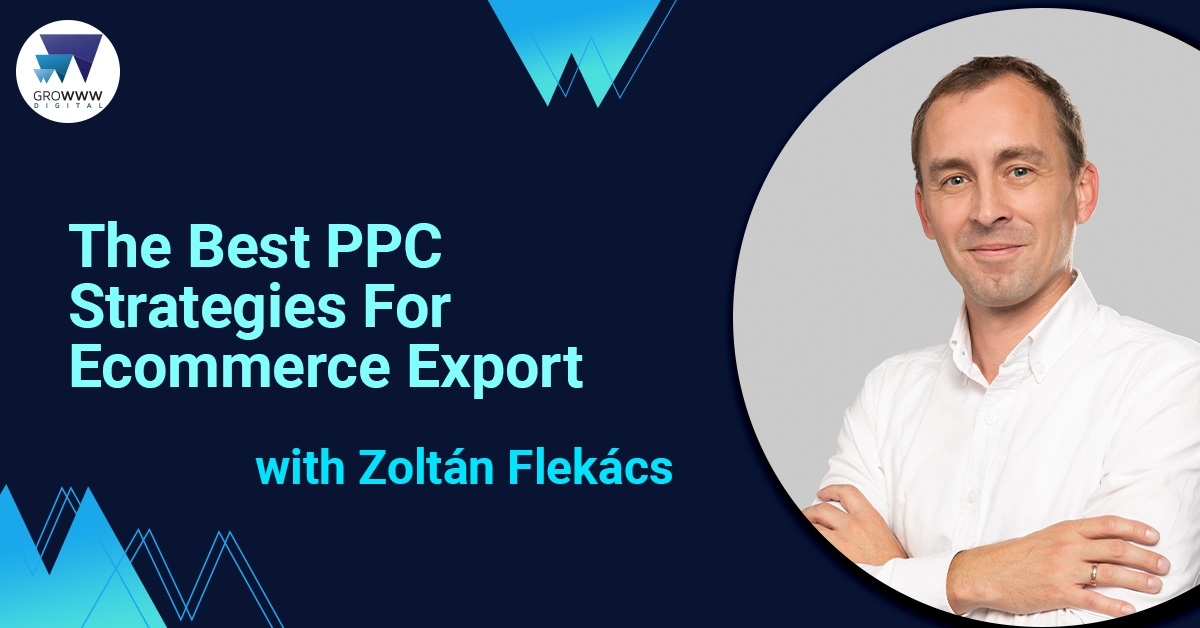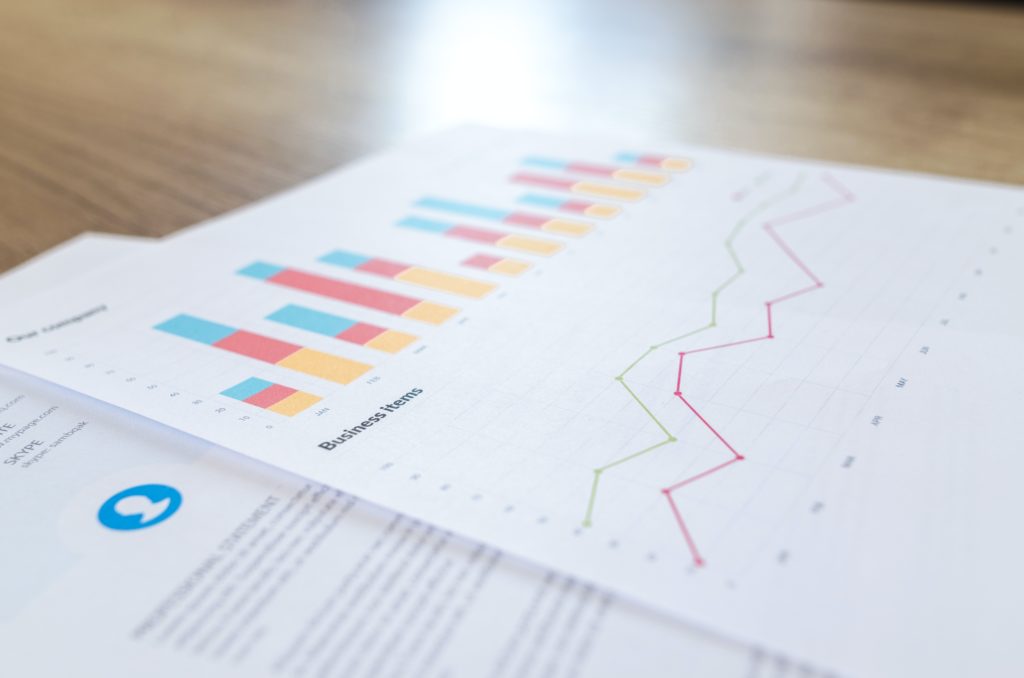
The Best PPC Strategies For Ecommerce Export
The Best PPC Strategies For Ecommerce Export
What is it ecommerce companies strive for at every phase of expansion, and how do PPC and acquisition tools help support each stage? We’ve gathered some of the evergreen PPC best practices, and as an export-focused digital marketing agency, added an insider caveat.
Ecommerce businesses find themselves in an incredibly complex and fierce arena where PPC acquisition campaigns are both a must and a pain. Why exactly? Because everyone you are sharing this space with is investing in PPC too, it’s both a proven part of your marketing strategy and a challenge to constantly reiterate it to be at the top of the game.
According to a 2018 study, 45% of businesses under 50 employees invest in PPC. That number jumps to 74% if you include 50+ people companies. At Growww Digital, we like to think of PPC as an opportunity to test and grow quickly. Here are some of the strategies.
While we believe thorough market analysis is key to save you valuable time and resources later on during expansion, we’ve also gone ahead and collected everything from market size and growth figures to biggest industry players across 6 CEE countries.
What are the most common export goals online stores have?
Is it market share, profit, or brand awareness? “Essentially, all of these, only at different stages of expansion,” explains PPC expert and Head of Performance at Growww Digital Zoltán Flekács.
“Ecommerce companies typically have very different goals when entering a new market versus when they are already established. And even in each phase, goals differ from company to company based on the market you are in, who the competitors are, and so on.”
Being able to apply and flexibly support those goals as well as adapt to the market is therefore the most important skill for ecommerce export success.
1. Market Share: When to opt for it and why
Initially, most online stores opt for market share as their first export goal.
“The number one reason for even choosing export as your growth strategy is that it’s cheaper in your specific case to expand into a new country rather than compete in your domestic market,” Zoltán points out.
From this angle, expanding into new territories is 100% about gaining new markets. “However this is mostly funded by margins in your domestic market, at least in the first 1–2 years, or until the new country becomes self-sustainable and starts generating profit on its own,” PPC strategist says.
Until then, the main objective is – and definitely should be – to gain market share at or keep close to ROI0, i.e. looking at the combined performance of all countries to remain positive, rather than expect the new country to be profitable on its own.
Proven market share strategies
Growing in market share means gaining new customers, building trust, getting reviews, etc., and making sure you remain close to ROI0 or at least on a level you can finance from your domestic market profits.
“This is the period to test the new market and explore whether it works or not. With Shopping ads, you have a low entry barrier to gain some first results, valuable data about your competitors, the forcefulness of your competitors, and saturation of your segment,” Growww Digital’s Head of Performance recommends an efficient first step to refine your acquisition strategy.
You can create Shopping Ads in English or the local language, and get clarity fast.
2. If Profit is your goal, do this:
“Profit should be the focus in the next stage only,” Zoltán believes strongly. Once you have entered the market and gained a certain market share, then you can start focusing on profits.
What is this level of market share? It depends on your area of business, and the number of competitors, but a good benchmark would be when you are visible in searches on Google and reach a certain impression share as well as starting to see brand searches for your shop – that means you successfully set your feet in the new country.
“If you do this too early, you won’t be able to achieve the necessary sales volume to be a relevant player in the new market. So it’s a balance between growing and profitably growing which you need to consider and reconsider throughout the expansion,” the expert adds.

At this stage, you are likely still growing, in the number of searches, items, orders as well as revenue. It is time to reevaluate your campaign settings and change from an expansion-first to a profit-first strategy and start to optimise campaigns towards the new objective.
“For example, for Shopping Ads, you can use the Shopping for Business Objectives framework from Google to segment products into separate campaigns based on your business objectives for that particular item. I.e. group items by a margin or by seasonality and optimise for them instead of using the same settings for all products,” Zoltán suggests.
3. Brand Awareness is a valid, long-term goal
“To some extent, this goes against the other two as it does not bring immediate results in terms of revenue or profit, but you can have a strategy to focus on this if you have the funding available,” Zoltán clarifies
When is it generally good to invest in brand awareness as an ecommerce player? Is it for everyone?
Usually, it’s not black and white, and it’s not just one direction in strategy, but a mix of different objectives. The ingredients in this mix are changing over time. Brand awareness is part of this mix as well.
“When to apply and how much is the question,” the PPC lead agrees: “Once you have tested the new market, the initial results are as expected and you have made the decision to continue in the new market in the long term, then brand awareness becomes an important ingredient to your mix.” Use it to build trust and to plan long term as it takes time.
Also, brand awareness is not just PPC, it’s
- social media,
- email marketing,
- offline communication,
- it’s how you package your products,
- your customer support,
- your last mile experience,
- and what people tell each other.
Other than PPC strategy, this determines your success
What are the major factors that influence which strategy an online store chooses in the end? Is it budget, platform (Google, social media, etc.), resources (in-house team, freelancer, or agency)?
“The target market has a major influence on the strategy as well as the existing competitors,” Zoltán reminds us.
Platforms are merely tools where you execute the strategy. They sure play a role, but do not define the strategy. And as per budget? Definitely a major differentiator. Again, not much in strategy but rather in speed and volume. If you compare any medium-size fashion webshop with About You, for example, you get the difference.
All in all, according to Flekács, marketing is just one aspect: “You have to have local knowledge, delivery, and returns, customer service, payment options locally, many many things in the puzzle to get it right.”
Do you need a partner to help you expand abroad? Reach out!
Partner up with a trusted digital agency when doing business abroad. Fill in the form or feel free to contact László Szabó, co-founder and Head of Growth at Growww Digital, at szabo@growwwdigital.com or +36 30 537 7051
